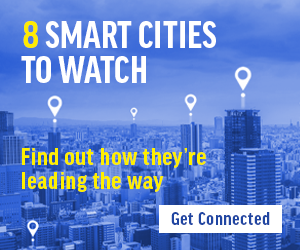3 Types of IT-OT Convergence
According to an SAS blog post, there are three main types of IT-OT convergence for local government leaders to be aware of.
One is process convergence, in which IT and OT personnel work together. As TechTarget reports, this involves the convergence of workflows. “IT and OT departments need to reform their processes to accommodate each other and make sure important projects are communicated,” the site notes. “This is an organizational convergence, dealing with the structure of the internal business.”
The second mode of IT-OT convergence involves software and data convergence. In this type of convergence, the connected “things” in a city — whether sensors, equipment or physical objects that are a part of the Internet of Things — and their associated data and analytics “commingle with enterprise data and application stacks,” the SAS blog states. TechTarget adds that this involves “getting software and data in the front office to work to address OT needs. This is a technical convergence, dealing with the network architecture of the business.”
The third type of IT-OT convergence involves physical convergence, in which IT systems and OT systems (such as industrial control systems) are physically integrated in a single system chassis or appliance, according to SAS. TechTarget adds that this also involves “physical devices being converged or retrofitted with newer hardware to accommodate the addition of IT to traditional OT. This is an operational convergence, where the hardware itself is updated and maintained over time.”
EXPLORE: How can smart grid technology be protected?
When IT and Operational Convergence Happens in Cities
There are several ways in which IT-OT convergence can play out in a smart city environment. Here are a few key use cases:
- Transportation: One constant in the transportation sector is that there are always assets on the move. As Sierra Wireless notes in its blog, IT-OT convergence can help in “real-time remote asset tracking, monitoring, and troubleshooting,” which allows organizations to see where assets are and when they arrive at destinations. “These applications can also find out what an asset is doing and change or optimize its operations,” Sierra notes. IT and OT systems can also benefit transportation organizations in cities by providing more of a real-time view of how those systems are being used. “By integrating IT and OT applications, rail organizations can have greater visibility not only into the age of assets, but their condition, as well as type and intensity of use,” an ABB blog post notes. “Therefore, they have more up-to-date information to guide long-term asset replacement planning.”
- Utilities: As the Utilities Technology Council, a global association focused on the intersection of telecommunications and utility infrastructure, notes in a brief on the topic, IT-OT convergence has played out in utility telecommunications, where migration of industrial control systems “from legacy technologies such as SONET (synchronous optical networking) to IP-based networks requires the ICS expertise of the OT department and the IP expertise of the IT department.” Another example is smart metering, in which physical meters themselves are “part of the electricity distribution network, but the meter data management and back office functions are classic IT applications.” IT-OT convergence also affects utility cybersecurity, the UTC notes, “as more intelligent devices are placed into ICS networks, requiring operational expertise from OT combined with cybersecurity expertise from IT.”
- Law Enforcement: IT-OT convergence can enable greater agility for law enforcement and public safety agencies. For example, connected sensors in infrastructure (such as gunshot detection sensors) or in surveillance camera feeds can transmit data easily to law enforcement. Personnel in operations centers or out in the field can then use that data to respond to incidents. “Incorporating IT capabilities such as big data analytics and machine learning into OT systems, along with faster connectivity solutions in order to quickly and more effectively respond to security and safety events, has allowed these industries to improve productivity and efficiency, offering a competitive edge to those organizations able to combine these systems effectively,” says Rick Peters, CISO for operational technology for North America at Fortinet, in a CSO post.













